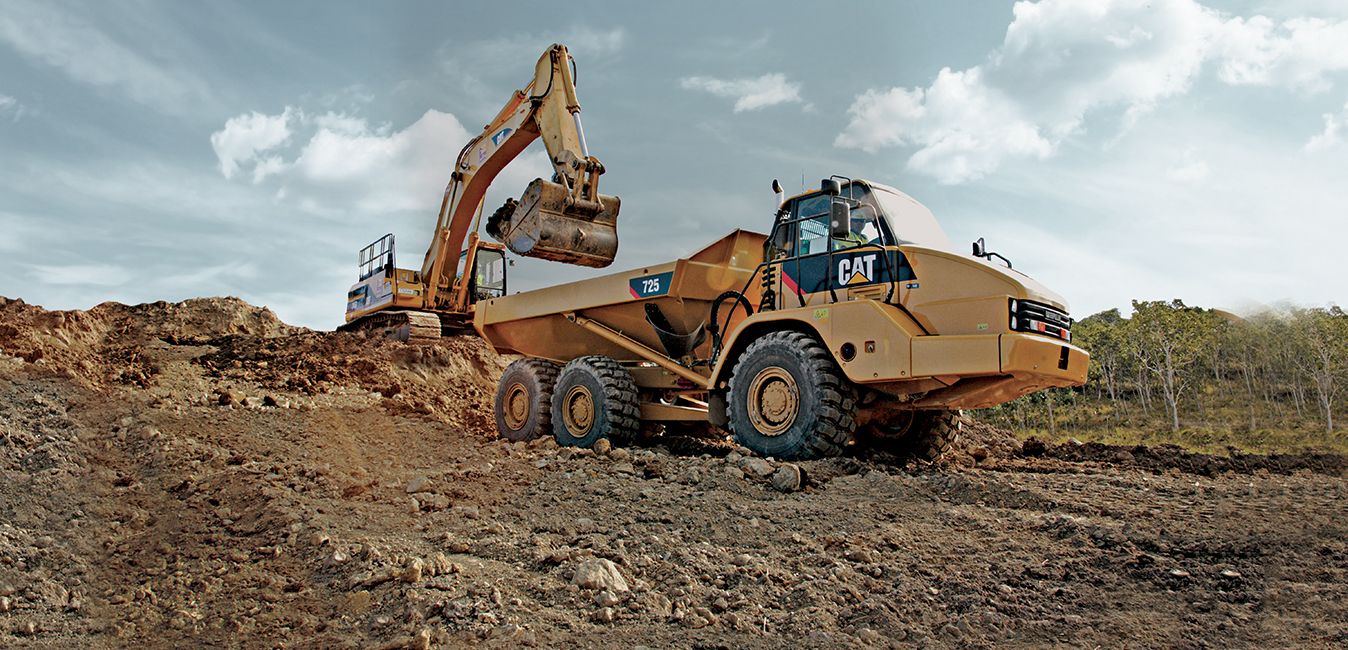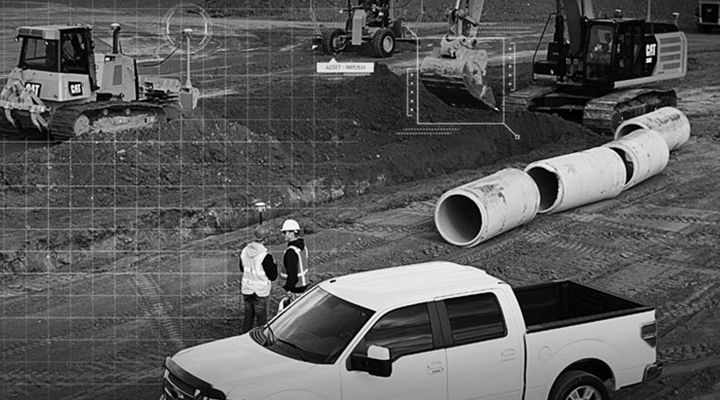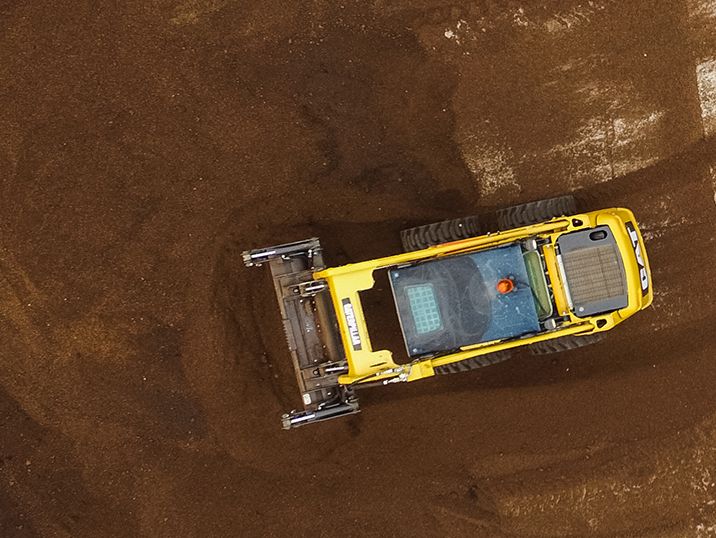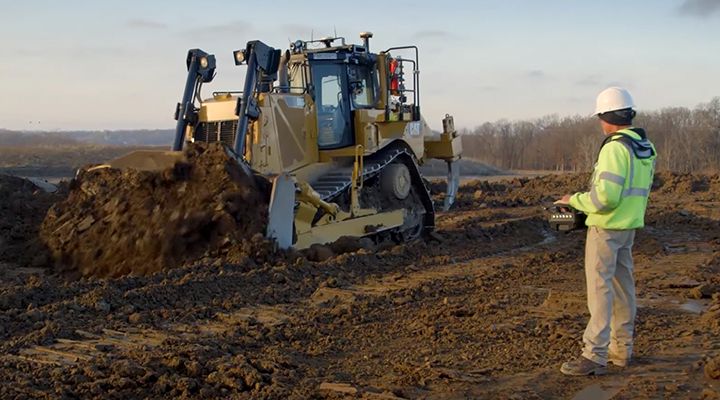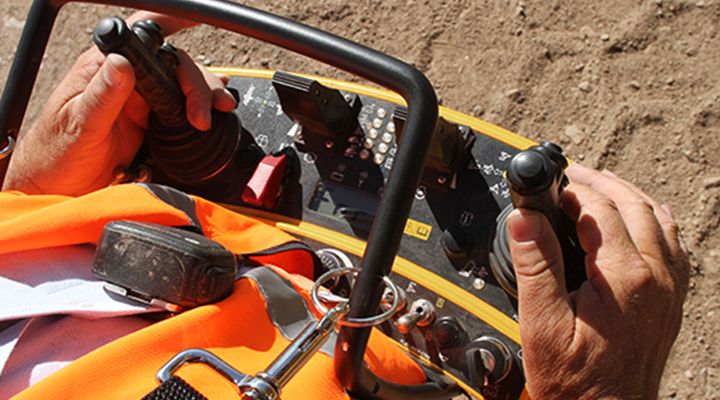

Sign In
Welcome! Sign In to personalize your Cat.com experience
If you already have an existing account with another Cat App, you can use the same account to sign in here
Register Now
One Account. All of Cat.
Your Caterpillar account is the single account you use to log in to select services and applications we offer. Shop for parts and machines online, manage your fleet, go mobile, and more.
Account Information
Site Settings
Security
Should You Take a Harder Look at Telematics?
Technology has been helping the construction industry get more productive for a long time. We’ve moved from paper and pencil to calculators and computers. And, there’s really been a steady stream of technologies integrating into construction businesses at all levels.
For example:
Electronic Plans
Use of electronic plans is becoming an accepted practice. Not only can plans be shared electronically and talked about over a tablet on the jobsite, but the plans are no longer paper blueprints that take up storage space.
Estimating
A large number of office applications give businesses the ability to enter critical job information and extract it on request. Precise and accurate costing information is critical to more efficient estimating. Competition is tight when bidding for jobs, and often what sets one company apart from the other is the accuracy and timeliness of its estimate. Technology drives faster estimating turnaround time.
Working Greener
Building with green technologies is more than just eliminating paper and waste. It also means finding ways to deliver materials and allowing a more accurate view of labor, material consumption and timelines. Technology keeps inventory up to date, reducing the chance of ordering too much or creating unnecessary waste.
Smartphones
No one would argue that the shift from walkie-talkies to smartphones has been significant and dramatic. Twenty years ago, “text” was type on the screen, not a social pastime. Smartphone cameras are being used every day as a means for providing photo documentation of job status, as well as operator prowess.
Tablets
The introduction of tablet technology has truly transformed jobsite management. Project managers and foremen don’t require paper copies to send back and forth to validate some part of the plan. Plans, change orders and RFIs can be sent from the tablet at the jobsite to the project manager’s device, wherever it may be. Cameras allow issues or safety concerns to be documented and resolved. And it’s all in real time. With connectivity between the jobsite foreman and the project manager, there are fewer delays, and issues are resolved faster.
So, why the slow down on telematics?
Interestingly, the adoption of telematics systems in construction has been much slower than these other technologies. A survey by the Association of Equipment Manufacturers (AEMP-2014) found that 22% of U.S. construction companies planned to start using telematics in the next 18 months. However, of the total surveyed, 62% said they had no plans to implement telematics.
One of the hurdles to adoption is the challenge of aggregating telematics data across mixed fleets. AEM/AEMP recently announced the introduction of a recommended telematics standard that will help telematics systems from different manufacturers all speak the same language, so that information can be rolled up into a total fleet point of view. The proposed standard telematics data points include hours, location, GPS distance traveled, machine odometer, fault codes, idle time, fuel consumption, fuel level, engine running status (on or off), switch input events, power take off (PTO) hours, average load factor, max speed, ambient air temperature, load counts, payload totals and active regeneration hours.
Take telematics one step at a time
But according to Tom Morgan of Branch Highways, who spoke on “Making a Business Case for Telematics” at the 32nd Management Conference and Annual Meeting in March 2014, a lack of standardization shouldn’t stand in the way—there are other compelling reasons to begin using telematics information. If you follow his thinking, you can begin with idle time and build greater telematics value from there.
According to Morgan, idle time and excessive idle time are intertwined with equipment management issues: fuel burn (which wastes fuel), time on the machines, service and hours, all of which are important because of warranty issues. If a machine idles 50% of the time, for instance, that’s 50% of warranty and 50% of service life wasted. To demonstrate the bottom line value of using telematics to monitor idle time and fuel burn, he does the math this way:
One hour of idle time costs roughly $10—$4 for fuel and $6 in maintenance and repair.
For a fleet of 200 units (2,000 hours):
- a 20% reduction in idle time would save $20,000 a year
- reducing idle time by 30% saves $400,000
- a 50% reduction equals $600,000
For larger fleets (1,000 assets/2,000 hours) that reduce idle time:
- a 20% reduction saves $1.2 million
- a 30% reduction saves $1.8 million a year
- a 50% idle reduction saves $3 million a year
Reporting telematics data on Cat® machines is now standard. If you have a piece of Cat equipment with telematics activated, you can also set up a VisionLink® account to review the information coming from your machine—information like idle time.
And, that data can help you in other areas. You could compare idle time on machines that have production technologies, like Cat Grade or Cat Payload. Are you getting the most from those technologies? Does the amount of idle time or fuel burn indicate your operator needs additional training? And what about the impact on equipment management and maintenance? Are there correlations between idle time, fuel burn and downtime?
Maybe now is a good time to take a harder look at how telematics data can help your business—you can check it out on your laptop, tablet or smartphone—or talk to your Cat dealer.
CALCULATE YOUR SAVINGS WITH PAYLOAD
How much could you save with Cat Payload technology? Plug your operation's data into the Payload Calculator for a real look at your potential yearly savings, thanks to more precise measurements. With on-the-go weighing, your operators can hit their targets, every time.
RELATED ARTICLES
You’re here to get ideas to grow your business. Read on for machine insights and expert tips and tricks to get more out of every job.
-
Productivity - More Efficiency. Better Results.
Cat® Technologies gives you the accuracy, consistency and productivity you want.
Learn More -
How to Use Drones on Construction Job Sites
You can use drones in construction for a wide variety of things, and with the right planning and drone program can give your business detailed, accurate, and real-time information on your site’s progress. This is information you can put to use to improve the quality, accuracy, and efficiency on the job.
Learn More -
Automation & Autonomy: What's the Difference?
These words get used interchangeably, creating confusion. To improve consistency, we've defined these terms.
Learn More -
Machine Control & Automation Can Add To Your Bottom Line
Technologies that enhance machine performance can add to the bottom line.
Learn More

